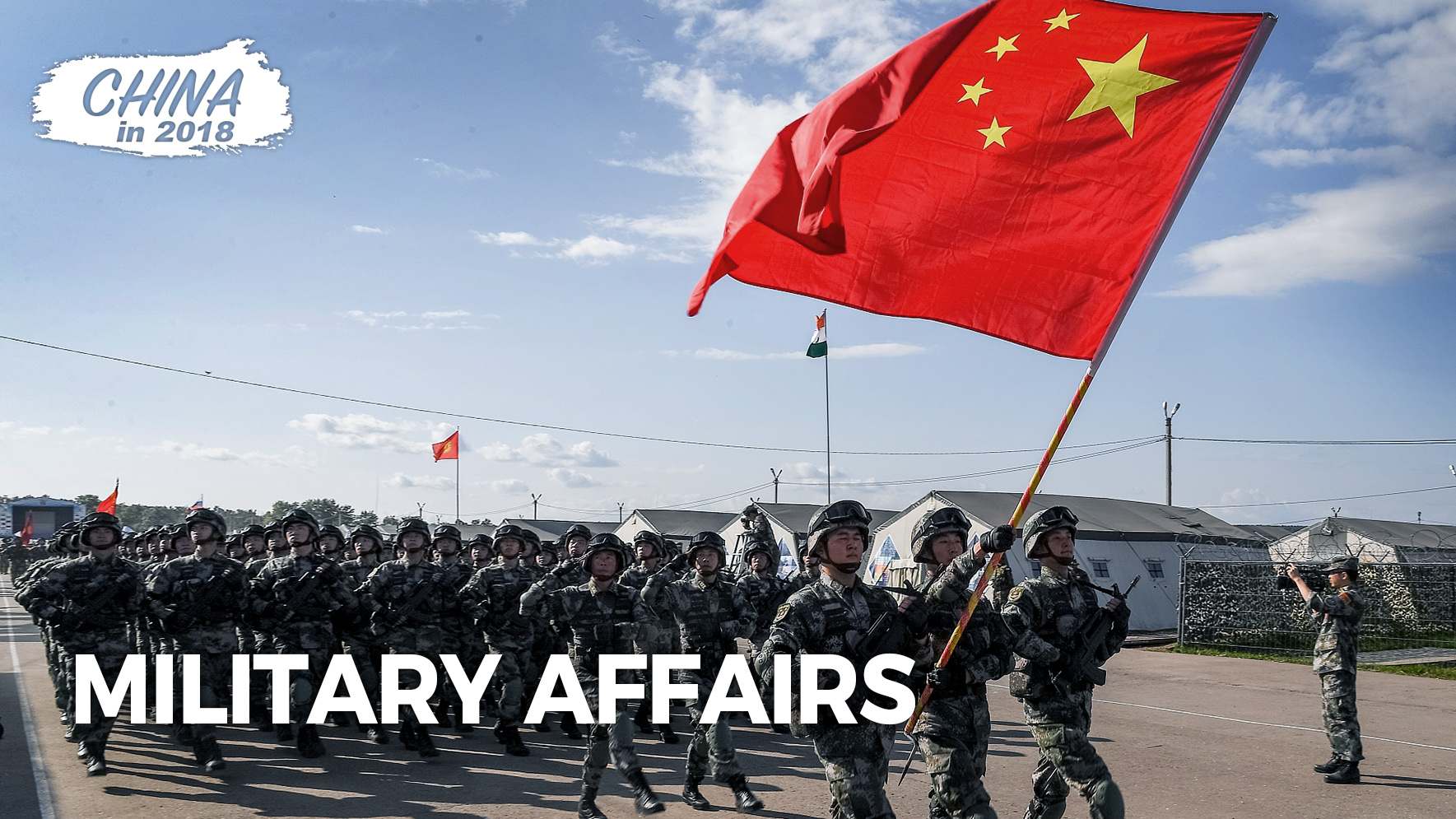"We must continue to enhance the political loyalty of the armed forces, strengthen them through reform and technology, and run them in accordance with law." – Xi Jinping
The priorities of China's military work in 2018 can be summarized in three key aspects.
Throughout the year, Chinese President Xi Jinping, also general secretary of the Communist Party of China (CPC) Central Committee and chairman of the Central Military Commission (CMC), emphasized repeatedly that all armed forces should be under absolute leadership of the CPC, that military-civilian integration in the new era should be deepened, and that real combat training should be enhanced.
CPC's absolute leadership
The armed police force was put under the command of the CPC Central Committee and CMC from January 1, and was no longer be under the authority of the State Council.
At the flag-conferring ceremony, Xi ordered the armed police force to "uphold the absolute leadership of the CPC."
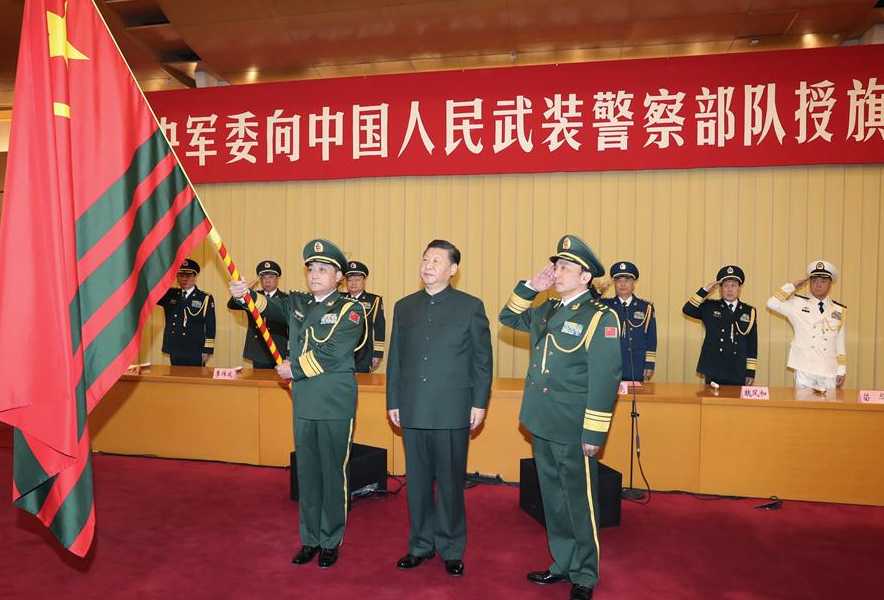
Chinese President Xi Jinping (C, front), also general secretary of the Communist Party of China (CPC) Central Committee and chairman of the Central Military Commission (CMC), confers the flag on the armed police force at a CMC ceremony in Beijing, capital of China, January 10, 2018. /Xinhua Photo
Chinese President Xi Jinping (C, front), also general secretary of the Communist Party of China (CPC) Central Committee and chairman of the Central Military Commission (CMC), confers the flag on the armed police force at a CMC ceremony in Beijing, capital of China, January 10, 2018. /Xinhua Photo
The adjustment in the leading and command system of the armed police force was "an important political decision" the CPC Central Committee had made to fully realize the absolute leadership of the Party over all armed forces and to develop "a socialist military system with Chinese characteristics," Xi said.
Military-civilian integration
A guideline on military-civilian integration was approved at
a plenary session of the central commission for integrated military and civilian development in March. Meanwhile, a plan for building innovation demonstration zones of national military-civilian integration was adopted.
Breakthroughs have been achieved in these demonstration zones with key reforms in science, technology and the defense industry, equipment procurement, military product pricing, tax revenue and breaking barriers between the military and civilians.
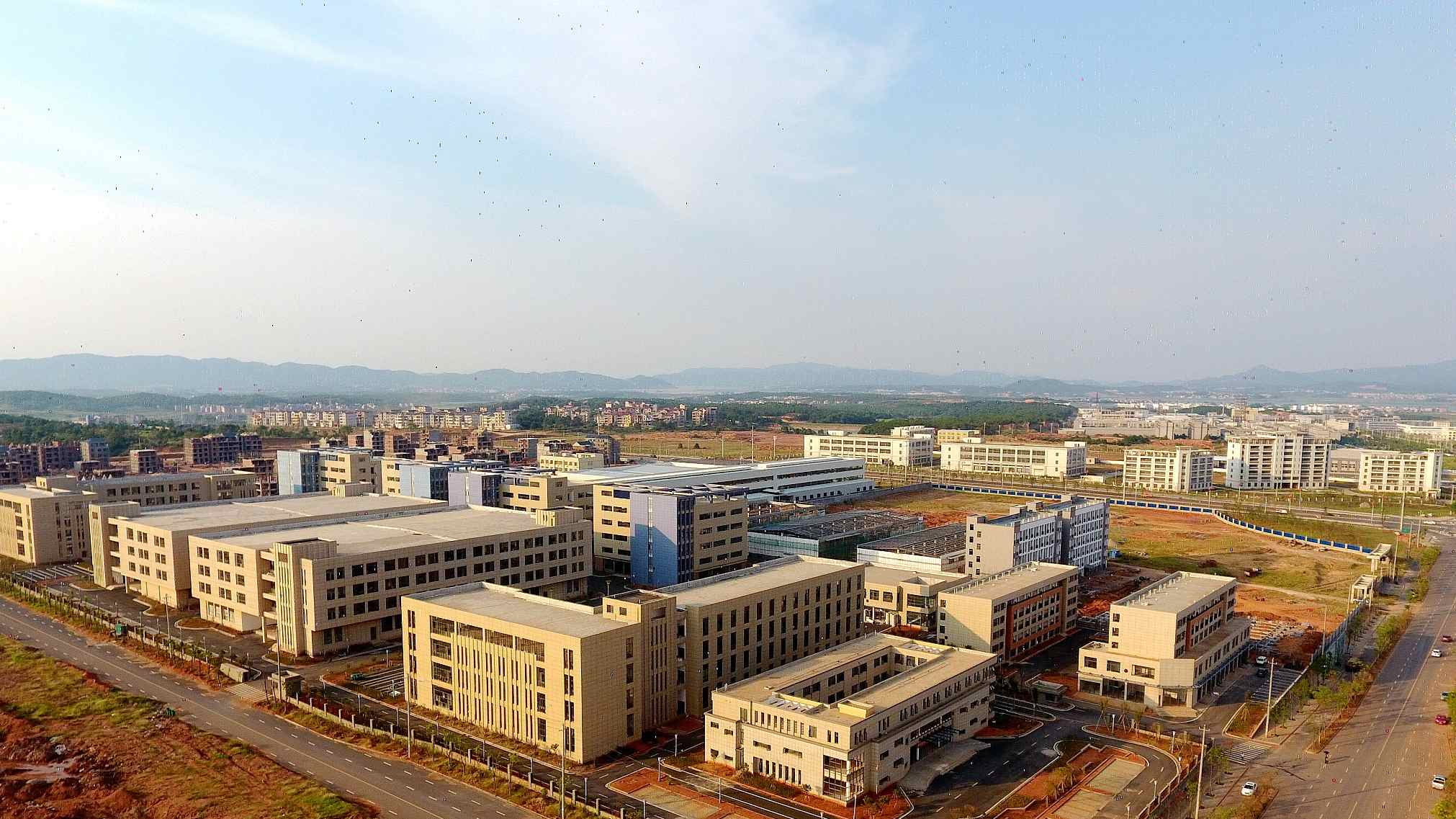
A military-civilian industrial base in Jishui, east China's Jiangxi Province, September 10, 2018. /VCG Photo
A military-civilian industrial base in Jishui, east China's Jiangxi Province, September 10, 2018. /VCG Photo
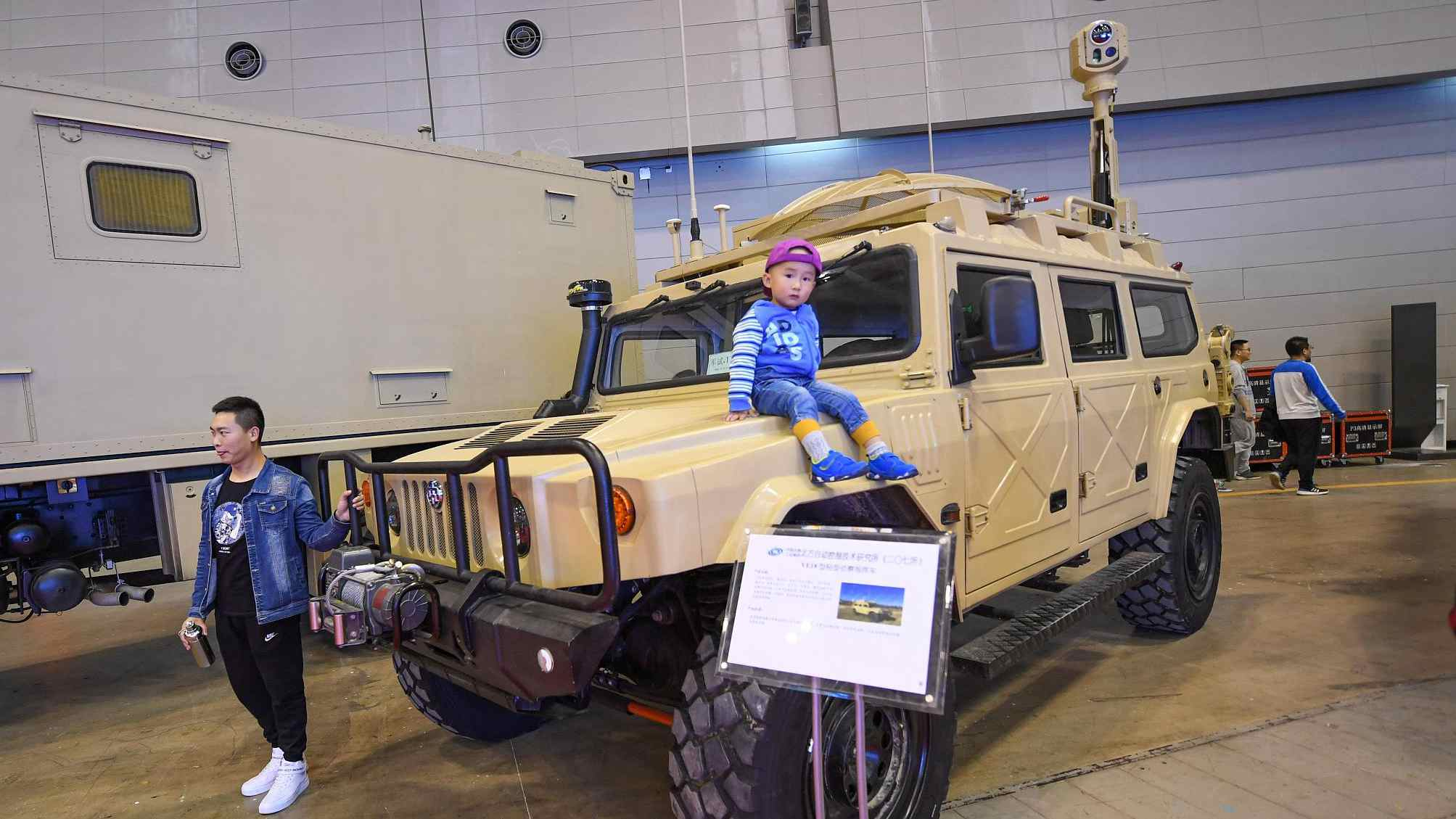
People visit the military-civilian integration science and technology achievements exhibition in Taiyuan, north China's Shanxi Province, September 28, 2018. /VCG Photo
People visit the military-civilian integration science and technology achievements exhibition in Taiyuan, north China's Shanxi Province, September 28, 2018. /VCG Photo
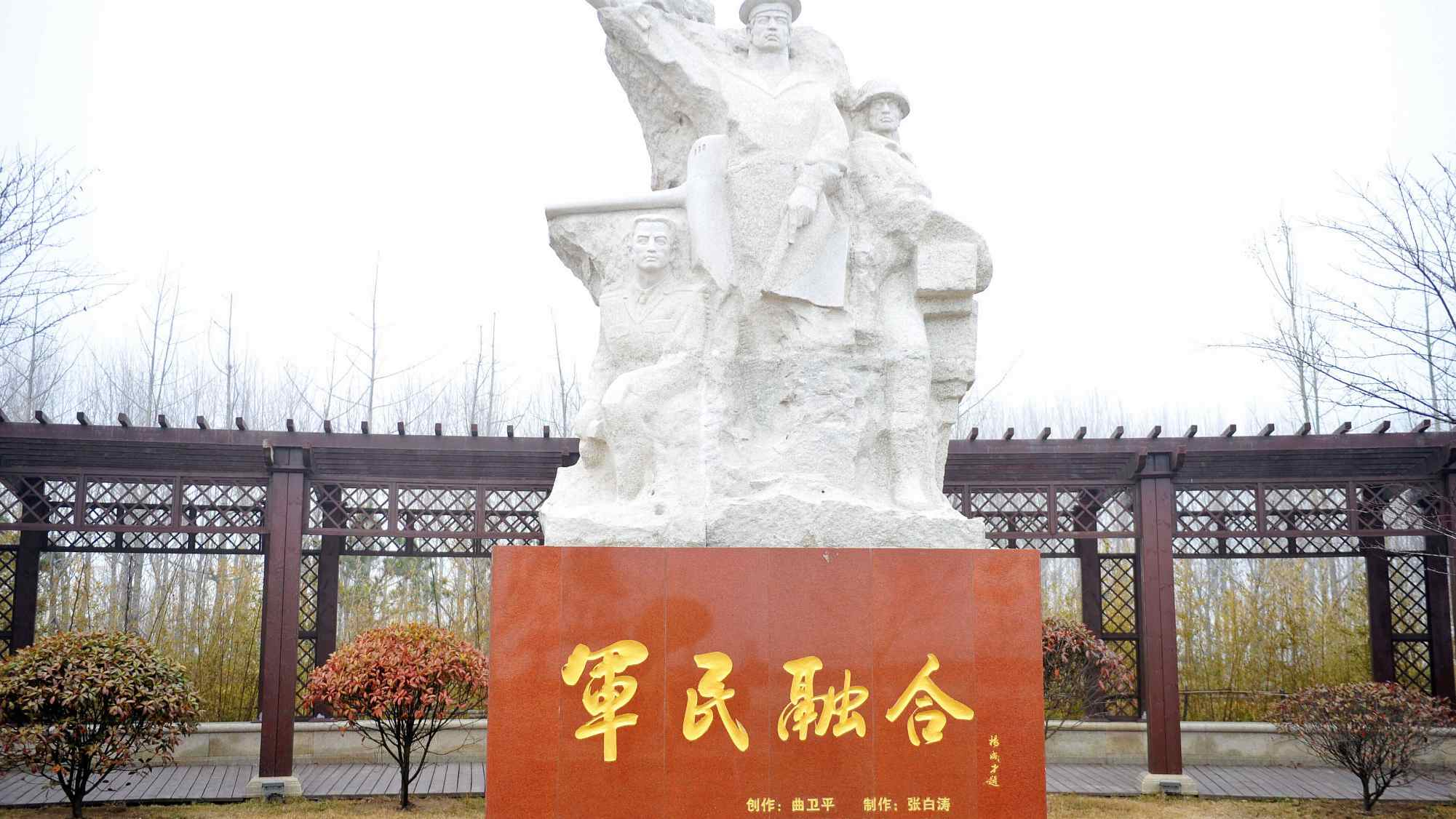
A sculpture of military-civilian integration in a park of Qingdao West Coast New Area, east China's Shandong Province, March 12, 2018. /VCG Photo
A sculpture of military-civilian integration in a park of Qingdao West Coast New Area, east China's Shandong Province, March 12, 2018. /VCG Photo
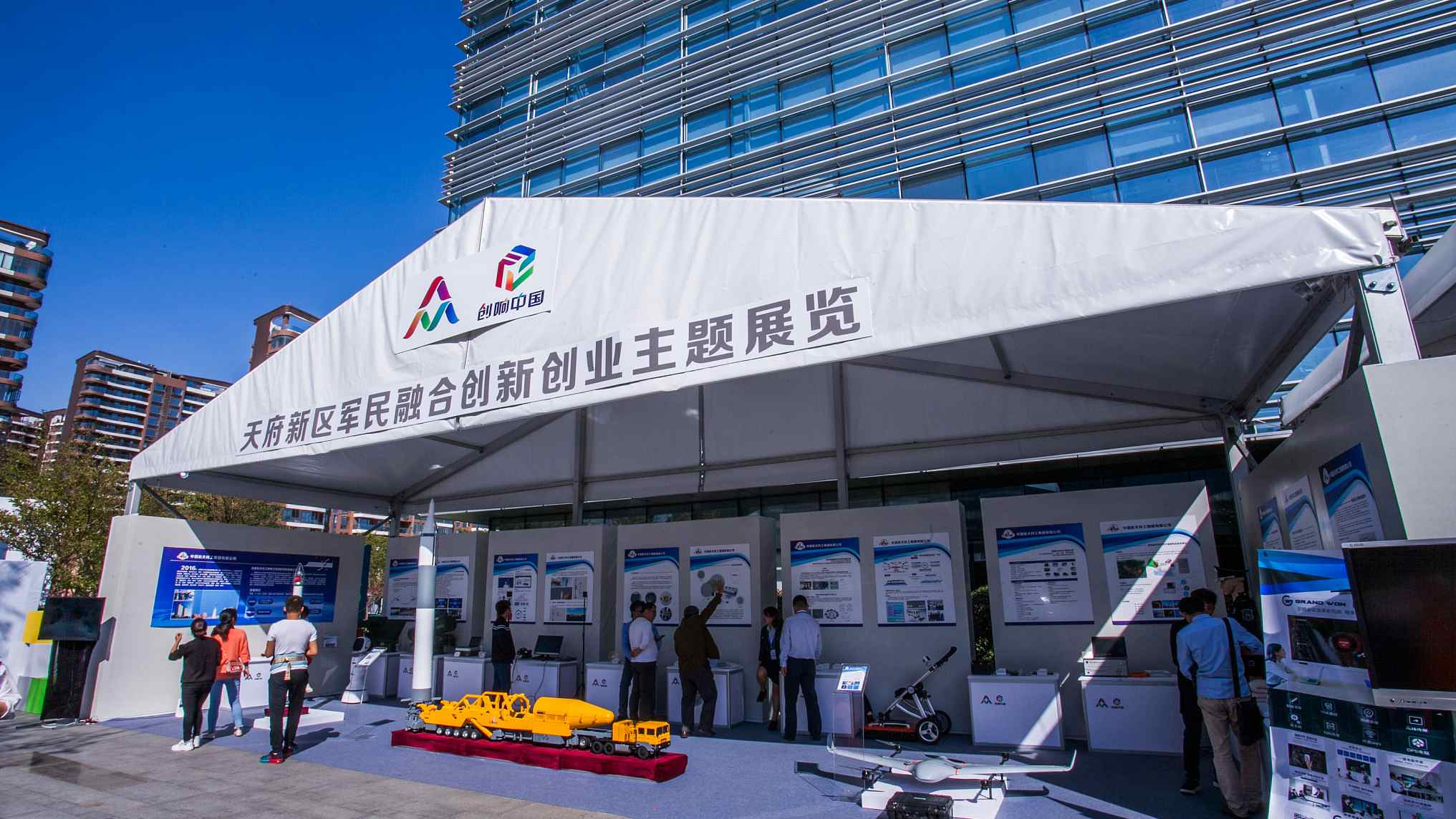
An innovation and entrepreneurship theme exhibition of military-civilian integration in Tianfu New Area of Chengdu, southwest China's Sichuan Province, October 10, 2018. /VCG Photo
An innovation and entrepreneurship theme exhibition of military-civilian integration in Tianfu New Area of Chengdu, southwest China's Sichuan Province, October 10, 2018. /VCG Photo
For example, Qingdao West Coast New Area was the first in the country to integrate military-civilian integration into local regulations and has introduced 140 military-related projects, creating a "test field" of military-civilian integration.
A total of 154 deals worth more than two billion yuan (289 million U.S. dollars) were signed between military and civilian sectors at a military-civilian high-tech equipment exhibition in Beijing in October.
Real combat training
Enhancing military training oriented at combat readiness was another vital point stressed by Xi during his several inspections this year.
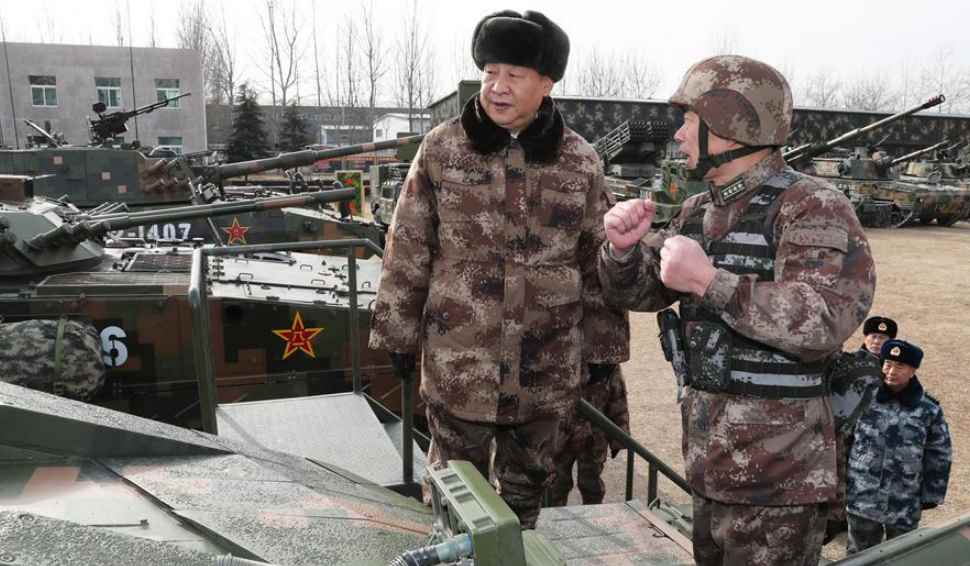
Chinese President Xi Jinping (L) boards a 99A tank during an inspection of a division of the People's Liberation Army (PLA) in the Central Theater Command, January 3, 2018. /Xinhua Photo
Chinese President Xi Jinping (L) boards a 99A tank during an inspection of a division of the People's Liberation Army (PLA) in the Central Theater Command, January 3, 2018. /Xinhua Photo
The year witnessed a series of moves in this regard. The air assault force, a combination of army aviation and mechanized infantry, made its debut as a new combat force during a three-dimensional drill in January; the navy's Haikou vessel, the first batch of equipped phased array radar ships in China, actively carried out comprehensive real combat exercises; China's second aircraft carrier started sea trials in May, and much more.
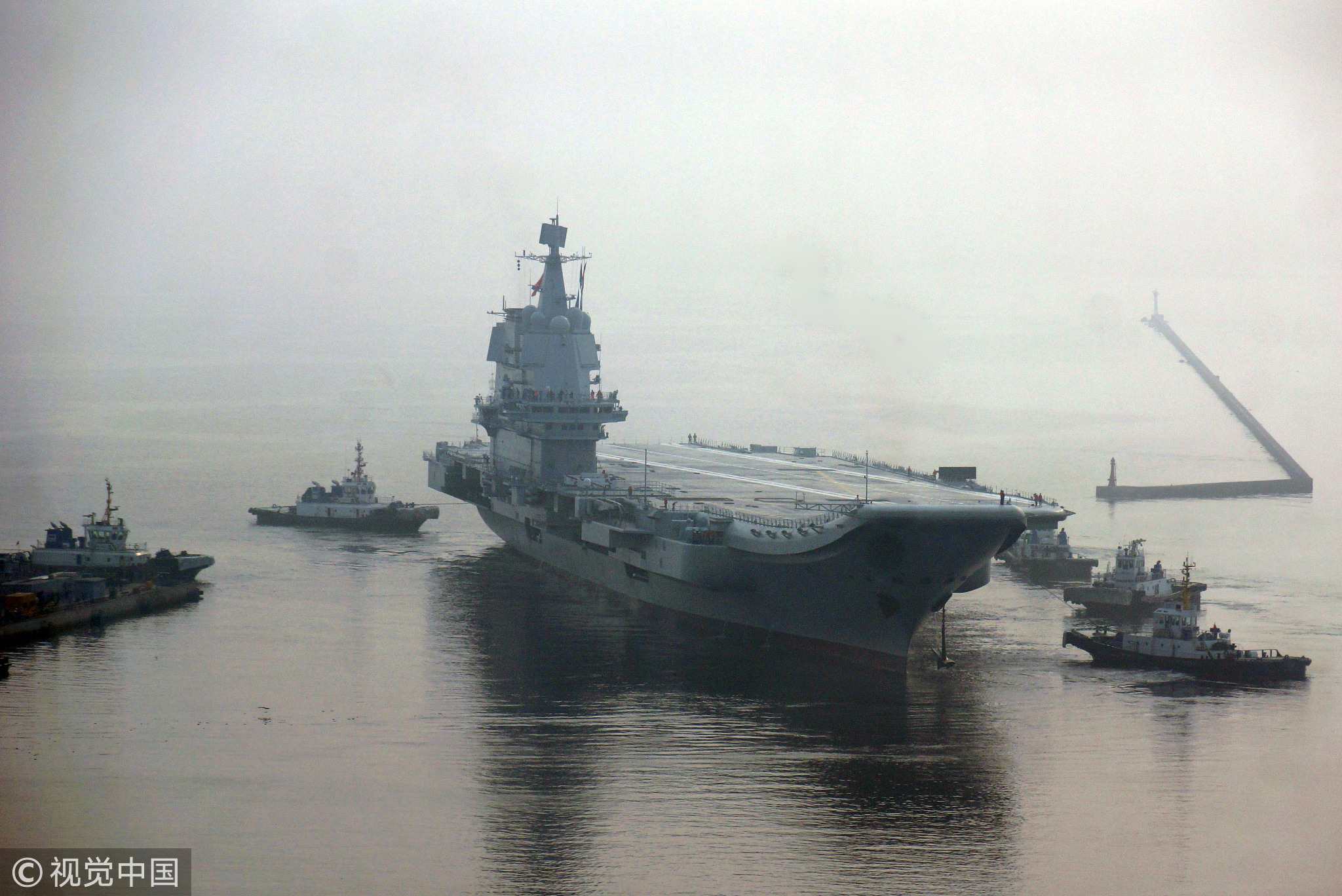
China's second aircraft carrier first goes to sea trials and sets sail for the sea trial mission in the relevant sea areas, May 18, 2018. /VCG Photo
China's second aircraft carrier first goes to sea trials and sets sail for the sea trial mission in the relevant sea areas, May 18, 2018. /VCG Photo
To strengthen real combat capabilities, military science and digitalization are used to guide military practices, and notable progress in this aspect has also drawn the world's attention.
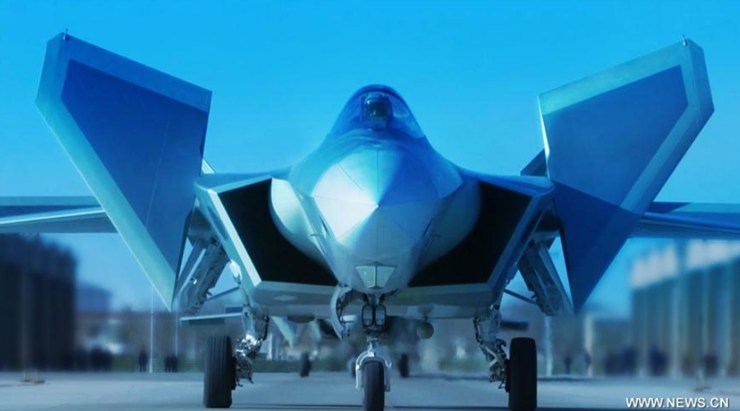
An undated file photo shows a J-20 stealth fighter. China's latest J-20 stealth fighters have been commissioned into air force combat service, a spokesperson confirms on February 9, 2018. /Xinhua Photo
An undated file photo shows a J-20 stealth fighter. China's latest J-20 stealth fighters have been commissioned into air force combat service, a spokesperson confirms on February 9, 2018. /Xinhua Photo
China's latest J-20 stealth fighters were commissioned into air force combat service in February, marking an important step for the J-20 to have comprehensive combat capabilities.
A new type of missile weaponry was authorized to be assembled in April. This is a new generation of medium and long-range ballistic missile developed by China and with completely independent intellectual property rights.

